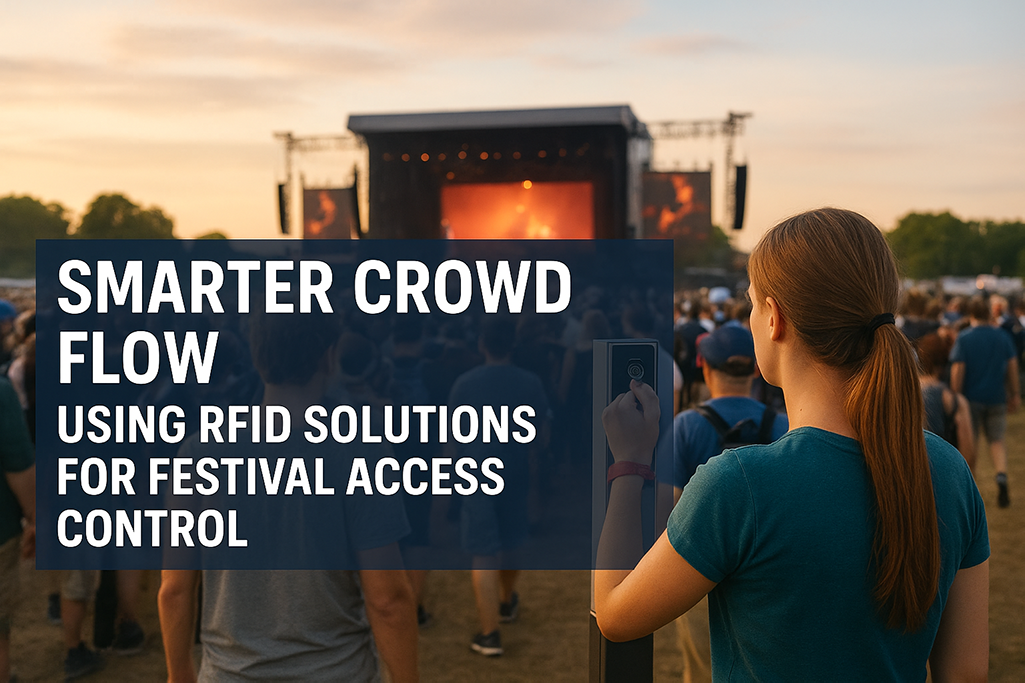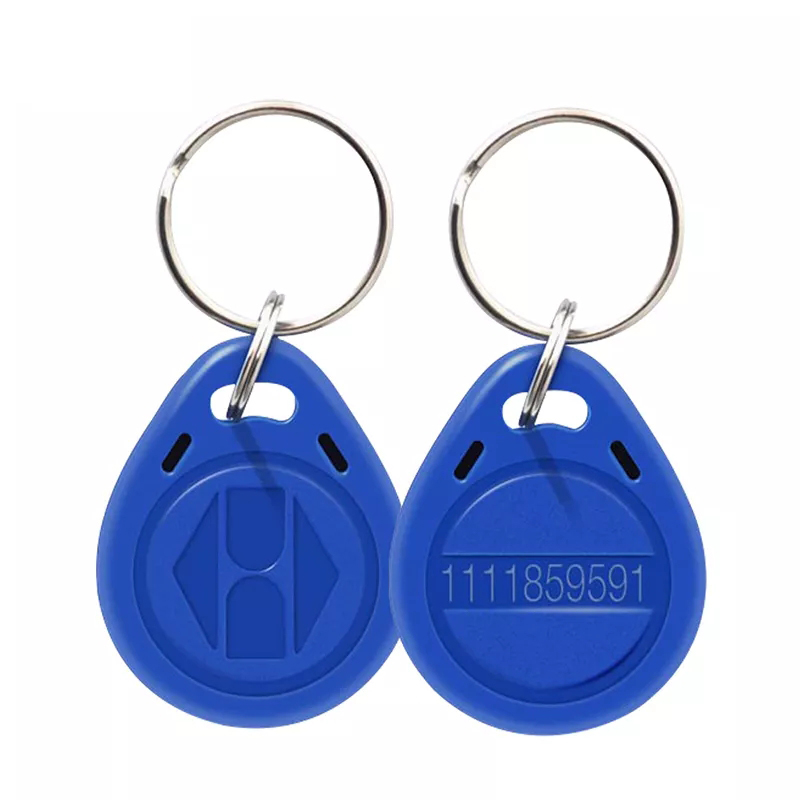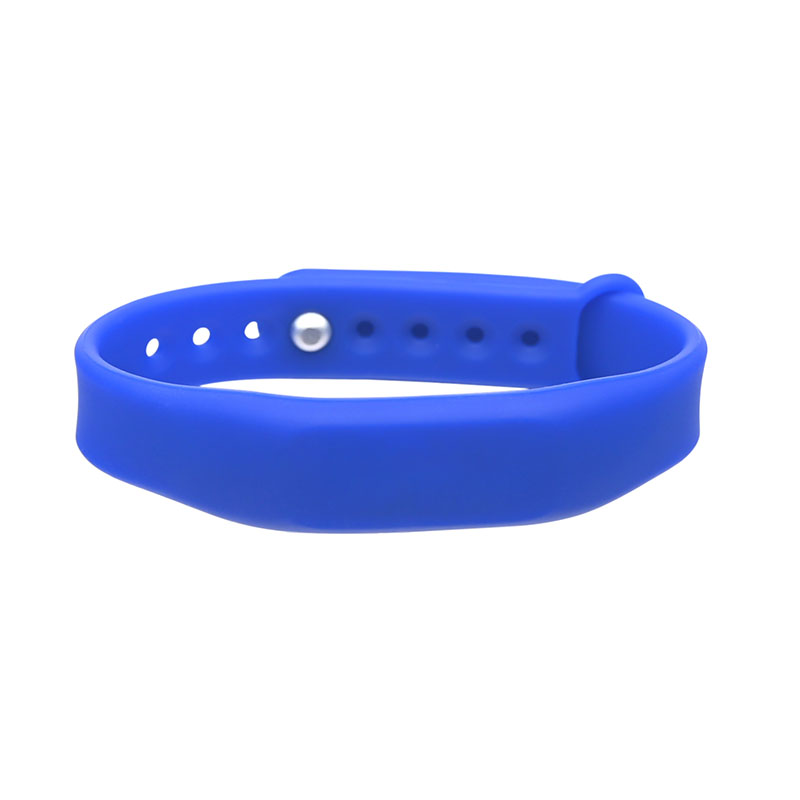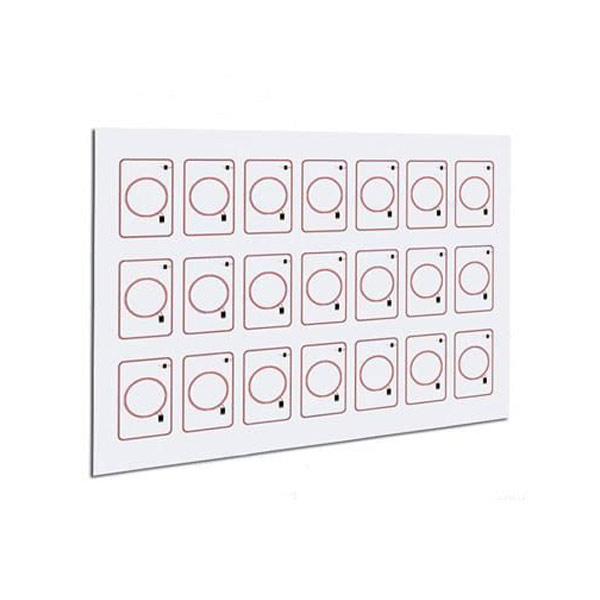
For many festivalgoers, the experience begins not on stage but at the entrance. Picture a large music festival with tens of thousands of attendees, where long queues slowly inch forward, paper tickets must be verified one by one, and QR codes fail to scan in the bright sun. Some guests misplace their wristbands before even entering, creating bottlenecks and frustration. Security staff face mounting pressure, and the first performance may start while hundreds remain outside.
Now consider a different scenario. Attendees receive RFID-enabled wristbands prior to the event. At the entrance, multiple RFID readers are installed at wide gates. Visitors simply raise their wrist, are verified in seconds, and continue inside. Lines move quickly, staff focus on crowd assistance rather than manual checking, and safety risks are minimized. RFID technology does more than streamline entry; it enables smarter crowd flow, enhances safety, and improves the overall visitor experience.
Managing large-scale festivals comes with unique operational and safety challenges. Traditional entry systems often struggle under the weight of high attendance, leading to inefficiencies and risks.
Extended waiting times and bottlenecks are the most visible issues. Even with multiple gates, barcode scanners or manual inspections slow the process. During peak periods, such as before headliners or popular performances, wait times can stretch beyond acceptable limits. Prolonged queues not only frustrate visitors but also create potential safety hazards, as crowd density increases faster than staff can manage.
Ticket fraud presents another challenge. Paper tickets can be duplicated, and QR codes may be shared or misused. Fraudulent entries reduce revenue and can push venues beyond safe capacity.
Safety and emergency response depend on accurate, real-time attendee data. Traditional systems often lack visibility into who has entered or where crowds are concentrated. Without this information, responding to emergencies like fires, medical incidents, or evacuations becomes difficult.
Finally, attendee experience suffers. Long lines, ticket confusion, or lost wristbands create frustration before the festival even begins. In today’s social media-driven environment, negative experiences are quickly shared, impacting event reputation and future ticket sales.
RFID Technology in Festival Access
Radio-Frequency Identification (RFID) technology provides a practical solution to these challenges. An RFID system consists of three core components: RFID tags, readers, and backend management software.
RFID tags, embedded in wristbands, badges, or smart cards, store a unique encrypted identifier. RFID readers are placed at entry points, capable of reading multiple tags simultaneously without direct line-of-sight. The backend system validates credentials in real time, logs entry data, and integrates with ticketing or event management platforms.
Unlike QR codes or barcodes, RFID does not require precise scanning. Attendees wave their wrist near a reader, and authentication occurs in seconds. RFID Wristbands are durable, waterproof, and tamper-resistant, making them ideal for multi-day outdoor events. From an operational perspective, RFID transforms access control from manual checkpoints into a data-driven, automated system that enhances both efficiency and safety.
Faster Entry and Reduced Queues
RFID significantly accelerates entry. Instead of scanning tickets individually, readers can process multiple wristbands at once. Studies of large festivals implementing RFID have reported entry times per attendee decreasing from 15–20 seconds to just 3–5 seconds. The result is shorter lines, less congestion, and a smoother start to the festival experience.
Enhanced Security and Fraud Prevention
Each RFID tag has a unique, encrypted identifier, preventing duplication or unauthorized reuse. Once a wristband is activated, it is locked to a specific attendee profile. Attempts to reuse or counterfeit a wristband trigger instant alerts. Organizers benefit from reduced revenue loss, controlled capacity, and strengthened brand reputation.
Real-Time Crowd Monitoring and Emergency Preparedness
RFID enables organizers to monitor crowd movement in real time. Each scan records entry and re-entry, providing accurate counts of attendees inside the venue. This is critical for emergency situations, allowing staff to assess which zones are overcrowded or require evacuation. Advanced systems may integrate BLE beacons to generate heatmaps, offering further insights into crowd distribution and density.
Improved Visitor Experience
Smooth entry enhances the overall attendee experience. Visitors avoid long waits, begin enjoying the festival immediately, and have a positive first impression. RFID Wristbands also double as festival memorabilia, often featuring branded designs or collectible elements. Additionally, they enable cashless transactions, allowing guests to purchase food, drinks, and merchandise quickly, improving convenience and boosting spending.
Operational Insights and Cost Efficiency
Beyond entry control, RFID provides valuable operational data. Organizers can analyze peak arrival times, average dwell times, and entry patterns to optimize gate staffing and logistics. Reducing manual ticket checking lowers labor costs, while fraud prevention and improved flow enhance revenue opportunities. The combination of operational efficiency and data-driven decision-making delivers measurable returns on investment.
Practical Use Cases
At a summer music festival hosting 50,000 attendees, traditional paper wristbands and barcode scanners caused wait times of over 30 minutes at peak periods, alongside recurring fraud incidents. After implementing RFID Wristbands with multi-lane readers, entry times dropped to under 10 minutes, ticket fraud decreased by more than 70%, and on-site sales increased by approximately 20% due to faster transaction times.
In another European cultural festival, RFID Wristbands were used to control access to VIP and backstage areas. Different wristband tiers were assigned to general admission, media, and VIP guests. Real-time attendance reporting allowed organizers to manage staff and resources efficiently, preventing overcrowding in sensitive zones. These cases illustrate that RFID enhances not only entry efficiency but also overall event management.
Considerations for Implementation
Despite its benefits, adopting RFID requires careful planning.
Cost and scalability are primary considerations. RFID Wristbands, readers, and backend systems require initial investment. For medium to large festivals, the long-term savings from reduced fraud, faster entry, and increased on-site spending often justify the cost.
System integration is critical. RFID platforms must seamlessly connect with existing ticketing software to avoid operational silos.
Staff training is essential to handle reader issues, lost wristbands, and attendee inquiries. Personnel must understand the system and be prepared for exceptions.
Connectivity and reliability should not be overlooked. Outdoor venues may face power interruptions or network instability, so contingency plans such as offline verification or backup power are necessary.
Privacy and compliance are also crucial. RFID systems track attendance and sometimes purchasing behavior. Organizers must comply with local data protection regulations, communicate clearly with attendees, and ensure robust cybersecurity measures.
The Future of RFID in Festivals
RFID continues to evolve and offers expanding possibilities. Hybrid systems integrating mobile NFC with physical wristbands provide flexibility and reduce material use. Advanced analytics allow predictive modeling for crowd management and staffing optimization. Sustainability trends encourage reusable or eco-friendly wristbands.
Looking ahead, RFID may enable personalized experiences, such as location-based offers, exclusive content, or VIP access customization. As the technology matures, RFID is positioned not just as a tool for entry, but as a strategic asset for enhancing attendee engagement, safety, and operational insight.
Conclusion
Effective crowd management at festivals is no longer a matter of manual ticket checking or simple barriers. RFID access control delivers faster entry, stronger security, real-time monitoring, improved attendee experience, and actionable operational data. Organizers who adopt RFID solutions can reduce waiting times, prevent fraud, enhance safety, and increase revenue—all while providing a seamless, enjoyable experience for visitors.
For festivals aiming to maintain a competitive edge and deliver exceptional experiences, RFID is no longer optional. It is a strategic investment that transforms access control into smarter crowd flow management, helping organizers achieve both operational excellence and guest satisfaction.





